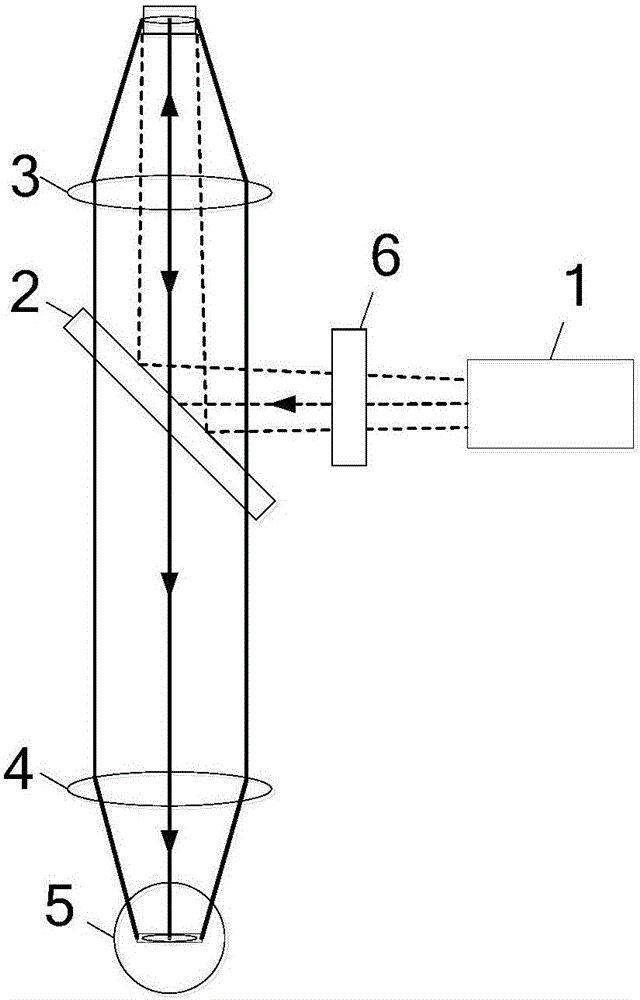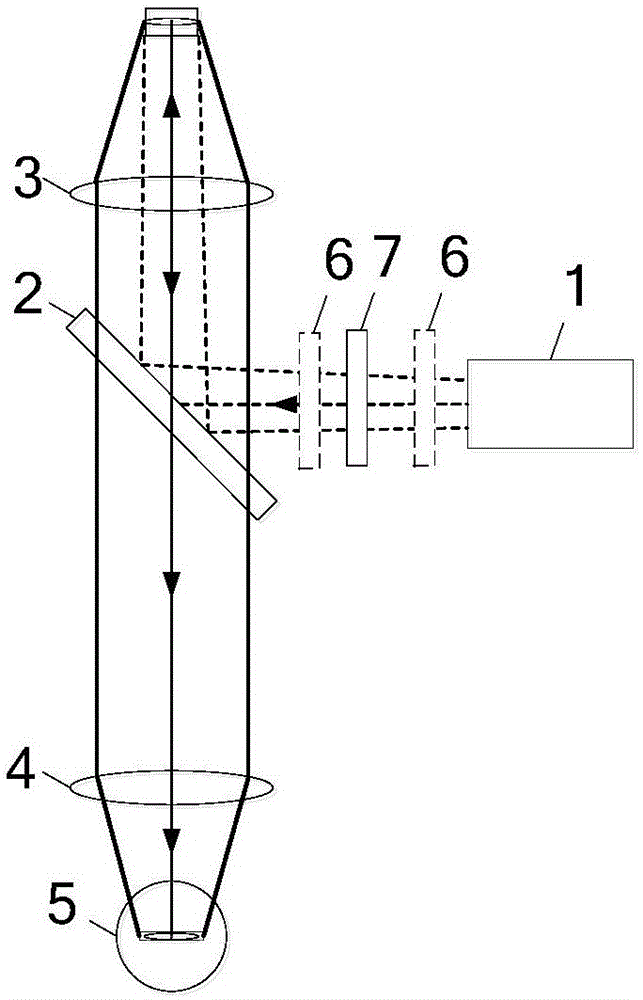Polarization modulation Raman probe using spatial output Laser, and spectral detection method
A polarization modulation and laser technology, applied in the field of laser excitation spectrum detection, can solve the problems of high cost, unsuitable for high-power lasers, etc., and achieve the effects of low passive cost, large sampling range, and reduced power density.
- Summary
- Abstract
- Description
- Claims
- Application Information
AI Technical Summary
Problems solved by technology
Method used
Image
Examples
Embodiment 1
[0051] figure 2 It is the structural diagram of the depolarized polarized Raman probe in the first embodiment. The depolarized polarization Raman probe includes: a spatial output laser 1 , an optical path conversion device 2 , an aggregation collection device 3 , a coupling filter device 4 , a spectrometer 5 , and a wave plate 6 .
[0052] The spatial output laser 1 is used to output laser beams whose divergence angles in the long axis direction and the short axis direction are inconsistent; the laser beam is linearly polarized light; the laser 1 can be a spatial stripe spot output laser.
[0053] The optical path conversion device 2 is arranged on the output optical path of the laser beam output by the spatial output laser 1, and is used to reflect the laser beam;
[0054] The collecting and collecting device 3 is arranged on one side of the optical path converting device 2 in a manner perpendicular to the laser beam reflected by the optical path converting device 2, and is...
Embodiment 2
[0059] image 3 is the structure diagram of the depolarized polarized Raman probe in the second embodiment. The difference between Embodiment 2 and Embodiment 1 is that the depolarized polarization Raman probe also includes a purification filter arranged between the spatial output laser 1 and the optical path conversion device 2 in a manner perpendicular to the laser beam output by the spatial output laser 1. The light sheet 7 and the purification filter 7 can purify the laser wavelength components and filter out stray light interference. The wave plate 6 is arranged between the spatial output laser 1 and the purification filter 7 in a manner perpendicular to the laser beam output by the spatial output laser 1, or the wave plate 6 is arranged in a manner perpendicular to the laser beam output by the spatial output laser 1 Between the purification filter 7 and the optical path conversion device 2 .
Embodiment 3
[0061] Figure 4 is the structural diagram of the depolarized polarized Raman probe in the third embodiment. The difference between embodiment three and embodiment two is that the depolarized polarization Raman probe also includes a notch filter 8 arranged between the optical path conversion device 2 and the coupling filter device 4, and the notch filter 8 It is used to block the collected Rayleigh scattered light, and to eliminate stray light signals in the interference band.
[0062] Another configuration of the depolarized polarized Raman probe is described below. In Embodiments 1, 2, and 3, the wave plate 6 is arranged on the optical path between the spatial output laser 1 and the optical path conversion device 2, while in the following embodiments, the wave plate 6 is arranged at the focus of the optical path conversion device 2 and the collection device 3 on the light path between.
PUM
 Login to View More
Login to View More Abstract
Description
Claims
Application Information
 Login to View More
Login to View More - R&D
- Intellectual Property
- Life Sciences
- Materials
- Tech Scout
- Unparalleled Data Quality
- Higher Quality Content
- 60% Fewer Hallucinations
Browse by: Latest US Patents, China's latest patents, Technical Efficacy Thesaurus, Application Domain, Technology Topic, Popular Technical Reports.
© 2025 PatSnap. All rights reserved.Legal|Privacy policy|Modern Slavery Act Transparency Statement|Sitemap|About US| Contact US: help@patsnap.com



